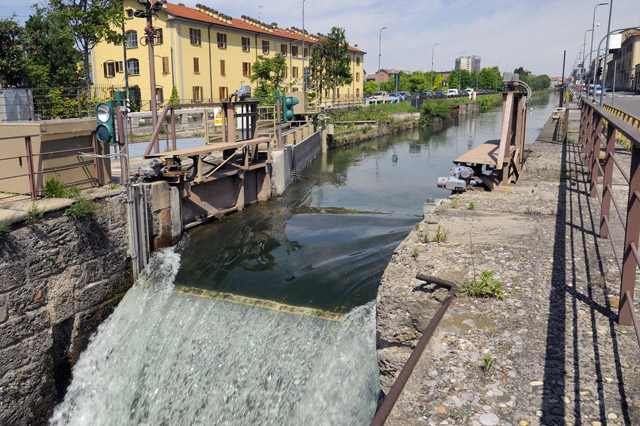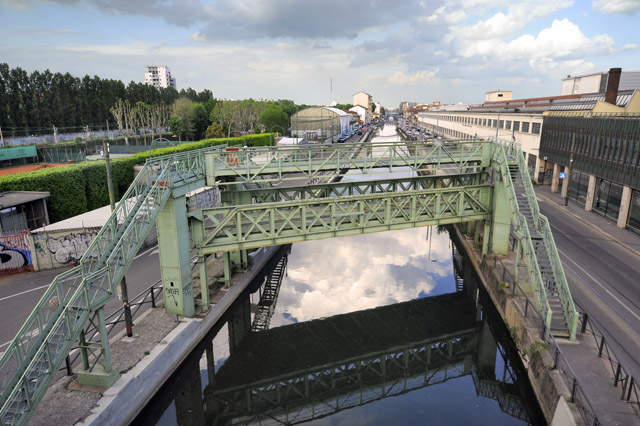 Milano è stata sempre una città d’acqua; i Navigli sono canali artificiali costruiti tra 1179 e il sedicesimo secolo con lo scopo di rendere la città accessibile dai fiumi Ticino e Adda. Via acqua arrivava a Milano ogni genere di merce, anche i marmi per la costruzione della cattedrale, il Duomo, più recentemente i giganteschi rotoli di carta per le rotative del Corriere della Sera. Durante il ventennio fascista una dissennata politica di riordino urbanistico fece sì che la maggior parte delle vie d’acqua venissero interrate. Oggi però sembra che la tendenza si sia invertita:i cittadini sono stati chiamati alle urne per un referendum consultivo sul ripristino dei Navigli, con il risultato nettamente favorevole alla loro riapertura. I tempi non si presentano brevi, ma la strada pare segnata, e Milano potrebbe tornare ad essere a pieno titolo, in un prossimo futuro, una “città d’acqua”.
Milano è stata sempre una città d’acqua; i Navigli sono canali artificiali costruiti tra 1179 e il sedicesimo secolo con lo scopo di rendere la città accessibile dai fiumi Ticino e Adda. Via acqua arrivava a Milano ogni genere di merce, anche i marmi per la costruzione della cattedrale, il Duomo, più recentemente i giganteschi rotoli di carta per le rotative del Corriere della Sera. Durante il ventennio fascista una dissennata politica di riordino urbanistico fece sì che la maggior parte delle vie d’acqua venissero interrate. Oggi però sembra che la tendenza si sia invertita:i cittadini sono stati chiamati alle urne per un referendum consultivo sul ripristino dei Navigli, con il risultato nettamente favorevole alla loro riapertura. I tempi non si presentano brevi, ma la strada pare segnata, e Milano potrebbe tornare ad essere a pieno titolo, in un prossimo futuro, una “città d’acqua”.
- Milan has always been a city of water; the Navigli are artificial canals built between 1179 and the sixteenth century with the aim of making the city accessible from the rivers Ticino and Adda. By water all kinds of goods arrived in Milan, including marble for the construction of the cathedral, the Duomo, more recently the giant rolls of paper for the rotary presses of Corriere della Sera. During the twenty years of Fascism a foolish policy of urban reorganization meant that most of the waterways were covered. Today, however, it seems that the trend has been reversed: citizens have been called to the polls for a consultative referendum on the restoration of the Navigli, with the result clearly in favor of their reopening. The times are not short, but the road seems marked, and Milan could return to be a full-fledged “city of water” in the near future.


